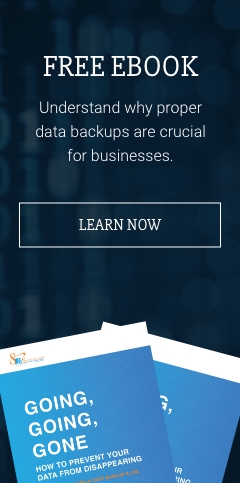The proceedings of the 2018 US midterm elections received intense scrutiny, due in large part to the Russian misinformation campaign that rattled the 2016 US election season. The Boston Globe uncovered a government report that indicated more than 160 suspected election-related incidents, including attempted illegal logins to voter databases, compromised municipal networks, and even incidents of attempted campaign phishing.
The Department of Homeland Security noted the kinds of threats they have briefed the secretaries of states and other top election officials on, such as phishing or server malware. Their reports show how much power-motivated individuals or organizations can wield in pursuing illicit means of profit.
What does this mean for businesses like yours?
The US elections provided a fertile proving ground for how impactful a diligent and thorough approach to cybersecurity can be. It showed how quickly the cybersecurity landscape evolves over a short period and revealed that many networks and systems are still on “year zero,” meaning many businesses have a bare-bones approach to their IT infrastructure.
The same principles of state- and nationwide cybersecurity are at play for business owners — people and organizations that spread cyberthreats have no qualms about who they attack, so long as they can gain something of worth. That means your business’s sensitive information is at risk, and the most effective way of handling that recurring risk is through diligence and proaction.
Cyber hygiene is the first line of defense
Cyber hygiene is similar to physical hygiene — it’s having a proactive approach by putting up an initial layer of protection that can resist superficial threats to our health. Cyber hygiene encompasses regular security activities such as scheduled system virus scans, OS updates, checking for security patches, periodic changing of passwords, and when necessary, wiping of hard drives and storage devices.
Prevention is better than cure
Threat prevention means stopping the attack before it occurs, and this is addressed by a competent firewall, an up-to-date virus/spyware/adware/malware protection suite, and a strong enforcement of IT-user policy set. A sanitized network is always easier to patrol, which is why business owners should first build a strong IT backbone for their business before actually deploying it.
If cyber hygiene is akin to hand washing and flossing, a strong security backbone is a network’s immune system.
Test before threats test you
Reputable cybersecurity providers such as Safebit conduct penetration tests in order to evaluate the security of IT infrastructures. This is done in a safe, controlled environment and involves safely attacking the IT infrastructure to identify vulnerabilities before they can be exploited by malicious attackers. These security holes may exist due to improper or incongruent configurations, as well as risky end-user behavior.
Specialist support matters
Specialist support is vital to the integrity of cybersecurity suites of small- to medium-sized businesses (SMBs). IT as a broad practice is highly technical on its own, and it does not get any easier to understand as it trickles down the branches of the industry. Cybersecurity can make or break a business; unfortunately, SMBs aren’t IT specialists. That is why it should be in expert hands.
How can you apply this to your business?
You should always look at cybersecurity as an ever-evolving component of your business and accordingly, it should be given the resources and management it needs for it to stay always “combat-ready” . This constant state of readiness does not happen overnight or occur in a vacuum; the key is to always anticipate changes to conditions and potential threats.
You don’t have to do it yourself. We at Safebit can provide you with a customized approach to each step of the deployment process — from planning to implementation to assessment — as per your business’s specific needs and budget. Get in touch with us to learn more.


